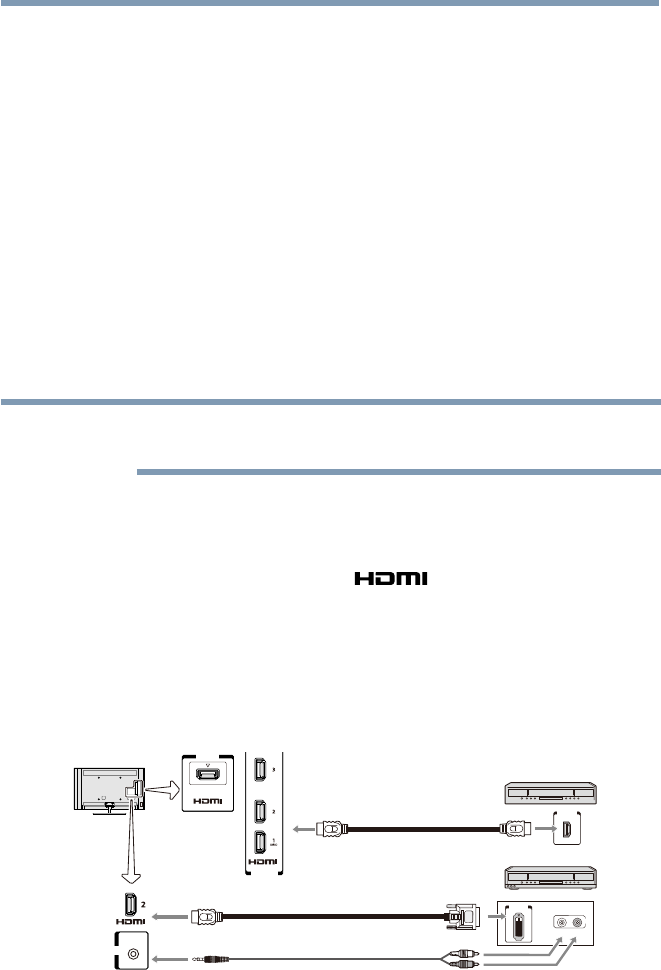
Connecting Your TV
37
Connecting an HDMI
™
or DVI device to the HDMI
™
input
The HDMI
™
input on your TV receives digital audio and uncompressed
digital video from an HDMI
™
source device, or uncompressed digital
video from a DVI (Digital Visual Interface) source device.
This input is designed to accept HDCP (High- Bandwidth Digital-Content
Protection) program material in digital form from EIA/CEA-861-D–
compliant[1]consumerelectronicdevices(suchasaset-topboxorDVD
player with HDMI
™
or DVI output).
The HDMI
™
input can accept and display VGA, SVGA, XGA, WXGA,
SXGA, 480i (60Hz), 480p (60Hz), 720p (60Hz), 1080i (60Hz), and 1080p
(24Hz/30Hz/60Hz)signalformats.Fordetailedsignalspecications,see
“HDMI
™
signal formats” on page 176.
The supported Audio formats are Linear PCM and Dolby
®
Digital,
sampling rate 32/44.1/ 48 kHz.
NOTE
To connect a PC to the HDMI
™
input, see “Connect a computer to the TV’s
HDMI
™
terminal” on page 43.
To connect an HDMI
™
device, you will need one HDMI
™
cable (type A
connector) per HDMI
™
device:
❖
For proper operation, it is recommended that you use an HDMI
™
cable with the HDMI
™
Logo ( ).
❖
To display an 1080ip/60Hz signal format, you will need a High
Speed HDMI
™
cable. A conventional HDMI
™
/DVI cable may not
work properly.
❖
HDMI
™
cables transfer both video and audio. Separate analog audio
cables are not required (see illustration).
HDMI
OUT
DVI/HDCP
OUT
R
L
OUT
HDMI IN
HDMI IN
4
PC / HDMI 2
AUDIO
IN
Analog audio cable
HDMI
TM
-to-DVI adapter cable
HDMI
TM
cable
DVI device
TV back panel
HDMI
TM
device (satellite or
cable box, DVD player, etc)
(Sample Illustration) L4300U/L7300U Series—Connecting an HDMI
™
or DVI device to the HDMI
™
Input
Connecting an HDMI
™
or DVI device to the HDMI
™
input


















